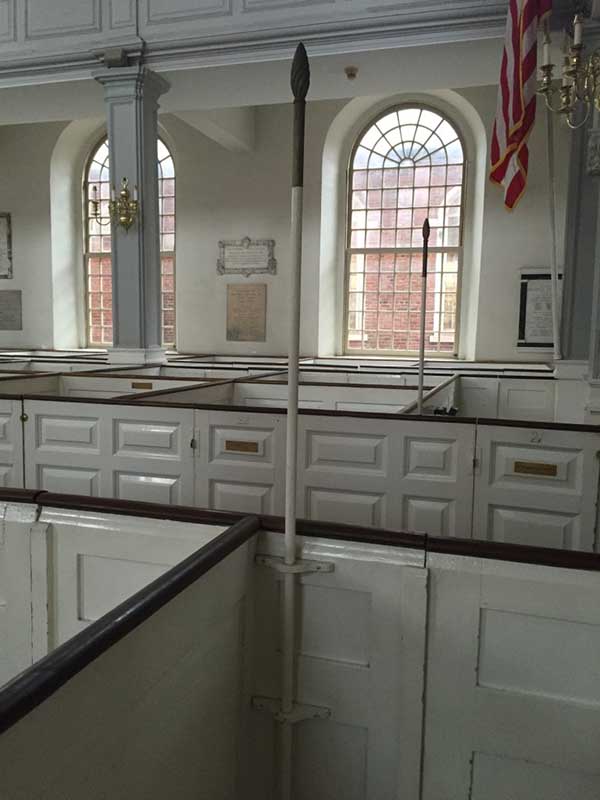The Wardens’ Wands

Just inside the entrance of the Old North Church stand two white poles with strange gold pine cones on top. The casual observer might pass them right by and not even notice them, but they played an important role in the history of the Church. These are the Wardens’ Wands, and they are placed right inside the two pews that are reserved for the Wardens of the Church.
The role of the Church Warden varies not only by congregation but by country of origin. Christ Church in the City of Boston, commonly known as Old North, began her life as a Congregation in the Anglican tradition. After the War for Independence, the Church became Episcopal, but many of the traditions carried over. The Anglican Church was not the official state church of the Massachusetts Bay Colony, which was the Congregational Church, so the laws governing the order of the Church was different here in Massachusetts than it was in Virginia.
In the Virginia Colony, the Church was ruled by the secular government and the Church Wardens carried on such tasks a laying out the boundary lines of the parish or that of the Town. Wardens were also entrusted to survey and clear roads in the towns where they served. The role of the Warden in Colonial Massachusetts was much different, and they had no legal authority outside of the confines of the Church, but inside they ruled absolute.
The role of the Warden has changed since the 18th century. Elected or appointed wardens had the responsibility to keep order in the church and the churchyard. Wardens could remove unruly parishioners and fine them for their unsavory behavior. They had powers of arrest on church property and would patrol the inside and outside of the church during services, and this is where the wand comes in.
The wand is usually a long wooden pole topped with a final of some sort, often silver or brass. In the case of the wands at Old North, they are wooden. The wand was a symbol of the office and would be carried by the Wardens in the process ahead of the bishop and used for the protection of the bishop. The wands were also used as a way to move large groups of people in and out of the church, for self-protection during the exercise of their duties, and to keep people awake during services, especially the sermon. 18th-century church services could last several hours, and sometimes the preacher was not very skilled in his oration, so people might nod off a little. The warden would come by and poke them with the end of their wand to bring them back to consciousness. There was an additional, much gentler wand with a feather on the end of it that was used to wake the ladies in the congregation.
One can only imagine what would go on inside of the Church, but obviously, there must have been some unruly crowds if there was a need to arm the Wardens for their protection. There are historical accounts of clergy saying things that the congregation has disagreed with and even some historical accounts of clergy being rushed and taken out of the church by force. But those accounts are left to history, I hope.
The Wardens’ Wands at Old North are primarily decorative now and can be seen in the first box pew as you enter the sanctuary: a reminder of the past but also there to be pressed into service if necessary.
